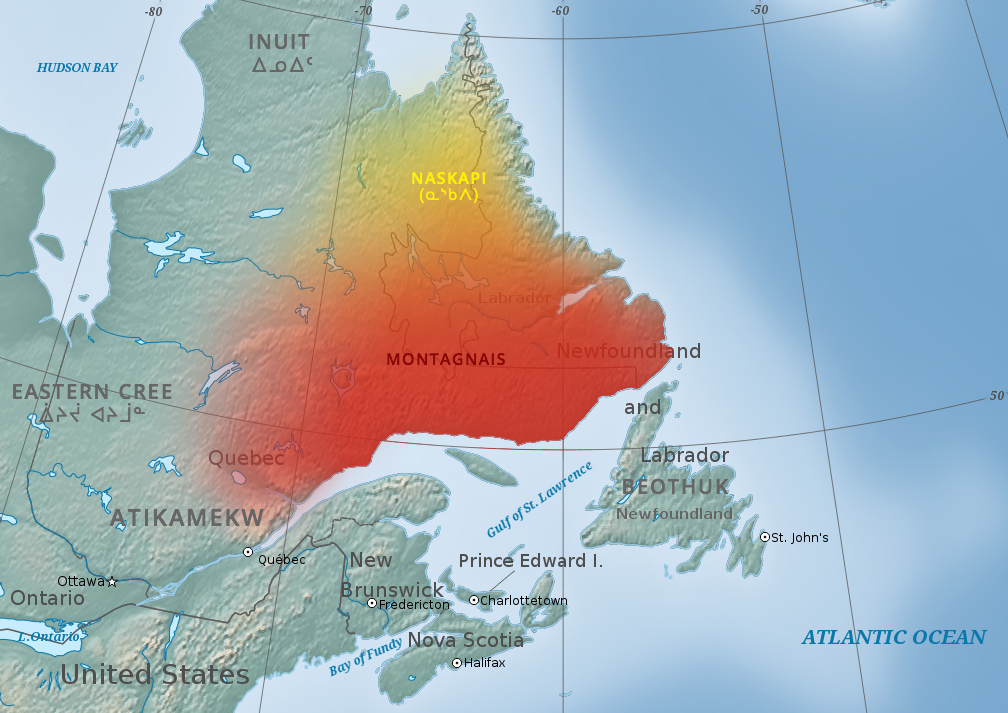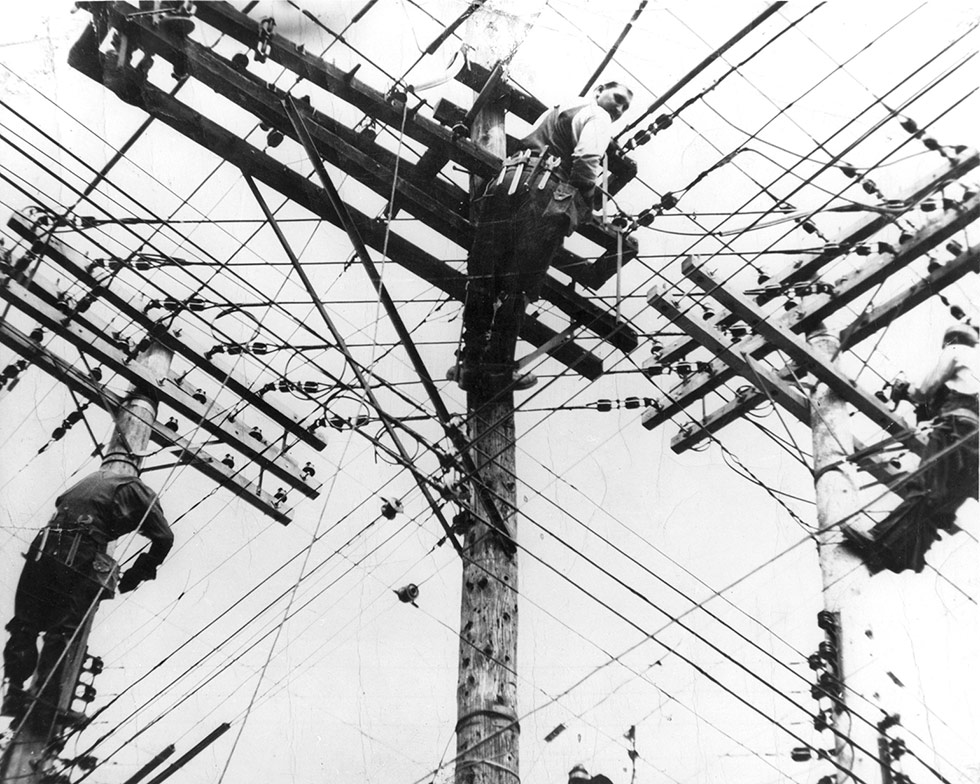|
Manicouagan River
The Manicouagan or Manicuagan River, often clipped to Manic, is a river in Côte-Nord region of Quebec, Canada. The river originates in the Manicouagan Reservoir and flows approximately south, emptying into the Saint Lawrence River near Baie-Comeau. The reservoir, also known as Lake Manicouagan, lies within the remnant of an ancient eroded impact crater ( astrobleme). It was formed following the impact of a diameter asteroid which excavated a crater originally about wide, although erosion and deposition of sediments have since reduced the visible diameter to about . The Manicouagan impact structure is the sixth-largest confirmed impact crater known on earth. Name The river's name is believed to come from a Montagnais name meaning "Place where Tree Bark is Found". However the Innu of Betsiamites call it ''Menukuanistuk Shipu'', meaning "River of the Cup". Tributaries The major tributaries of the Manicouagan River are in upstream order: * Toulnustouc River ** Isoukustouc Riv ... [...More Info...] [...Related Items...] OR: [Wikipedia] [Google] [Baidu] |
Canada
Canada is a country in North America. Its ten provinces and three territories extend from the Atlantic Ocean to the Pacific Ocean and northward into the Arctic Ocean, covering over , making it the world's second-largest country by total area. Its southern and western border with the United States, stretching , is the world's longest binational land border. Canada's capital is Ottawa, and its three largest metropolitan areas are Toronto, Montreal, and Vancouver. Indigenous peoples have continuously inhabited what is now Canada for thousands of years. Beginning in the 16th century, British and French expeditions explored and later settled along the Atlantic coast. As a consequence of various armed conflicts, France ceded nearly all of its colonies in North America in 1763. In 1867, with the union of three British North American colonies through Confederation, Canada was formed as a federal dominion of four provinces. This began an accretion of provinces and ... [...More Info...] [...Related Items...] OR: [Wikipedia] [Google] [Baidu] |
Innu
The Innu / Ilnu ("man", "person") or Innut / Innuat / Ilnuatsh ("people"), formerly called Montagnais from the French colonial period (French for "mountain people", English pronunciation: ), are the Indigenous inhabitants of territory in the northeastern portion of the present-day province of Labrador and some portions of Quebec. They refer to their traditional homeland as ''Nitassinan'' ("Our Land", ᓂᑕᔅᓯᓇᓐ) or ''Innu-assi'' ("Innu Land"). The Innu are divided into several bands, with the Montagnais being the southernmost group and the Naskapi being the northernmost. Their ancestors were known to have lived on these lands as hunter-gatherers for several thousand years. To support their seasonal hunting migrations, they created portable tents made of animal skins. Their subsistence activities were historically centred on hunting and trapping caribou, moose, deer, and small game. Their language, Ilnu-Aimun or Innu-Aimun (popularly known since the French colonial ... [...More Info...] [...Related Items...] OR: [Wikipedia] [Google] [Baidu] |
Rivière Aux Outardes (North Shore)
The Rivière aux Outardes or Outardes River is a river in Quebec, Canada. The river originates in the Otish Mountains, and flows in a southerly direction for its entire course. It passes through Lake Plétipi and Burnt Islands Lake (''Îles Brûlées''), and widens about midway to form the large Outardes 4 Reservoir. It drains into Outardes Bay of the Saint Lawrence River, about southwest of Baie-Comeau. At its mouth, the Outardes River widens and flows over a sandbar, making it extremely shallow. There are several islands in Outardes Bay of which the most notable are White Island (''île Blanche''), a rock of white granite high, and Mine Island (''île de la Mine''), a bare red rock reaching high. The river was first called Cane or Caen River by Jean Alfonse in 1544. The name ''riviere aux Outardes'' came in use following its appearance on maps by Jacques-Nicolas Bellin in 1744 and 1764. English maps from the end of the 18th century and early 19th century would show "Bustard ... [...More Info...] [...Related Items...] OR: [Wikipedia] [Google] [Baidu] |
Hydroelectricity
Hydroelectricity, or hydroelectric power, is electricity generated from hydropower (water power). Hydropower supplies one sixth of the world's electricity, almost 4500 TWh in 2020, which is more than all other renewable sources combined and also more than nuclear power. Hydropower can provide large amounts of low-carbon electricity on demand, making it a key element for creating secure and clean electricity supply systems. A hydroelectric power station that has a dam and reservoir is a flexible source, since the amount of electricity produced can be increased or decreased in seconds or minutes in response to varying electricity demand. Once a hydroelectric complex is constructed, it produces no direct waste, and almost always emits considerably less greenhouse gas than fossil fuel-powered energy plants. [...More Info...] [...Related Items...] OR: [Wikipedia] [Google] [Baidu] |
Hydro-Québec
Hydro-Québec is a public utility that manages the generation, transmission and distribution of electricity in the Canadian province of Quebec, as well as the export of power to portions of the Northeast United States. It was established by the Government of Quebec in 1944 from the expropriation of private firms. This was followed by massive investment in hydro-electric projects like the James Bay Project. Today, with 63 hydroelectric power stations, the combined output capacity is 37,370 megawatts. Extra power is exported from the province and Hydro-Québec supplies 10 per cent of New England's power requirements. Hydro-Québec is a Crown corporation ( state-owned enterprise) based in Montreal. In 2018, it paid CAD$2.39 billion in dividends to its sole shareholder, the Government of Québec. Its residential power rates are among the lowest in North America. More than 40 percent of Canada’s water resources are in Québec and Hydro-Québec is the fourth largest hydropowe ... [...More Info...] [...Related Items...] OR: [Wikipedia] [Google] [Baidu] |
Missionary
A missionary is a member of a Religious denomination, religious group which is sent into an area in order to promote its faith or provide services to people, such as education, literacy, social justice, health care, and economic development.Thomas Hale 'On Being a Missionary' 2003, William Carey Library Pub, . In the Bible translations into Latin, Latin translation of the Bible, Jesus, Jesus Christ says the word when he sends the disciples into areas and commands them to preach the gospel in his name. The term is most commonly used in reference to Christian missions, but it can also be used in reference to any creed or ideology. The word ''mission'' originated in 1598 when Jesuits, the members of the Society of Jesus sent members abroad, derived from the Latin (nominative case, nom. ), meaning 'act of sending' or , meaning 'to send'. By religion Buddhist missions The first Buddhist missionaries were called "Dharma Bhanaks", and some see a missionary charge in the symbolis ... [...More Info...] [...Related Items...] OR: [Wikipedia] [Google] [Baidu] |
Henri Nouvel
Henri Nouvel (1621 or 1624 in Pezenas, Herault (France) – between October 1701 and October 1702 at the St. Francis Xavier Mission near Baie des Puants) was a Jesuit priest who spent forty years as a missionary to Native American communities of New France. Nouvel was the first missionary on the north shore of the Saint Lawrence River; and he visited Saginaw 26 years before the French built a fort in Detroit (1701). Nouvel was already a priest when he entered the Jesuit order in August 1648, and performed religious functions in France until 1662. He sailed for New France in 1662 as a missionary, arriving in Quebec in August 1662. During his first year in North America, he devoted himself to learning Indian languages. At the end of 1663, he established his first mission in the Rimouski area. Between 1664 and 1669, he did missionary work in the Montagnais territory at Lake Manicouagan. In 1671, he was sent from to the Jesuit missions in the Great Lakes amongst the Odawa peopl ... [...More Info...] [...Related Items...] OR: [Wikipedia] [Google] [Baidu] |
Jacques Cartier
Jacques Cartier ( , also , , ; br, Jakez Karter; 31 December 14911 September 1557) was a French- Breton maritime explorer for France. Jacques Cartier was the first European to describe and map the Gulf of Saint Lawrence and the shores of the Saint Lawrence River, which he named "The Country of Canadas" after the Iroquoian names for the two big settlements he saw at Stadacona (Quebec City) and at Hochelaga (Montreal Island).. Early life Jacques Cartier was born in 1491 in Saint-Malo, the port on the north-east coast of Brittany. Cartier, who was a respectable mariner, improved his social status in 1520 by marrying Mary Catherine des Granches, member of a leading aristocratic family. His good name in Saint-Malo is recognized by its frequent appearance in baptismal registers as godfather or witness. First voyage (1534) In 1534, two years after the Duchy of Brittany was formally united with France in the Edict of Union, Cartier was introduced to King Francis I by Jean L ... [...More Info...] [...Related Items...] OR: [Wikipedia] [Google] [Baidu] |
Manicouagan River Survey
{{disambig ...
Manicouagan may refer to: * Manicouagan crater, an impact crater in Quebec *Manicouagan Reservoir, formed when the Manicouagan impact crater was converted to a reservoir. *Manicouagan Regional County Municipality, Quebec *Manicouagan River *Manicouagan (electoral district) *Manicouagan Uapishka Biosphere Reserve The Manicouagan Uapishka Biosphere Reserve is a biosphere reserve in Canada.. The area was designated as such by the United Nations Educational, Scientific and Cultural Organization (UNESCO) in 2007. The landscape of the Manicouagan – Uapishk ... [...More Info...] [...Related Items...] OR: [Wikipedia] [Google] [Baidu] |
Petite Riviere Manicouagan
Vincent Aycocho, or better known as Petite is a Filipino actor, comedian, singer and TV show host. He is known for as a Filipino comedian in ''Comedy Bar'', Punch line and Clowns, together with their other celebrities; Boobay, Iyah, Donita Nose, Ate Gay, Allan K. and Wally Bayola. Petite had more projects on GMA Network, such as hosting ''CelebriTV'', which was co-hosted with Joey de Leon. Career After in comedy bar Petite has a numerous shows in GMA Network; Petite signed a contract on GMA Network in 2014 as an actor and comedian, Petite guesting in ''CelebriTV'', and joining the Bulaga Pa More! in ''Eat Bulaga!'' as a performer, Sunday PinaSaya guesting in ''Kalyeserye'' as a applicant role and in '' Vampire ang Daddy Ko'' as special guest. ;''Comedy Bar'' Petite is a singer and performer in a Philippine TV comedian series ''Comedy Bar'', hosting Boobay, Fabio Ide and others, he is a best notable work in ''Comedy Bar'' before ''CelebriTV''. ;''Kalyeserye'' Petite is one of ... [...More Info...] [...Related Items...] OR: [Wikipedia] [Google] [Baidu] |
Hart Jaune River
The Hart Jaune River (french: Rivière Hart Jaune) is a river in Quebec, Canada. It flows from the Petit lac Manicouagan to the Manicouagan Reservoir. Location The Hart Jaune River is in the unorganized territory of Rivière-Mouchalagane in the Caniapiscau Regional County Municipality. It forms the outlet of the Petit lac Manicouagan at the Hart-Jaune Dam, which feeds the 45.5 MW Hart-Jaune generating station. The river flows southwest to the Manicouagan Reservoir. It is about long, and has a vertical drop of . The sources of the water are in the Uapishka Biodiversity Reserve, which also feeds the Toulnustouc and Manicouagan rivers. The Hart Jaune is one of the major inlets to the Manicouagan Reservoir, along with the Mouchalagane, Seignelay, Themines and Petite Riviere Manicouagan. The reservoir is drained by the Manicouagan River. Quebec Route 389 from Baie-Comeau to Labrador City crosses the river at Km 375 over a small wooden one-way bridge. In February 2 ... [...More Info...] [...Related Items...] OR: [Wikipedia] [Google] [Baidu] |





